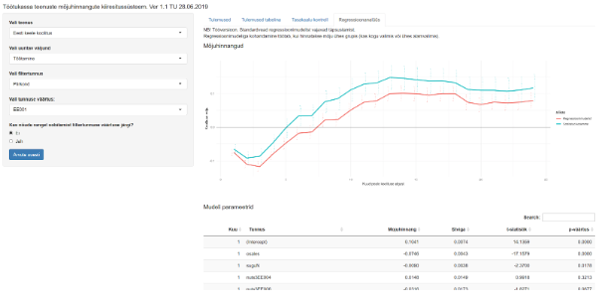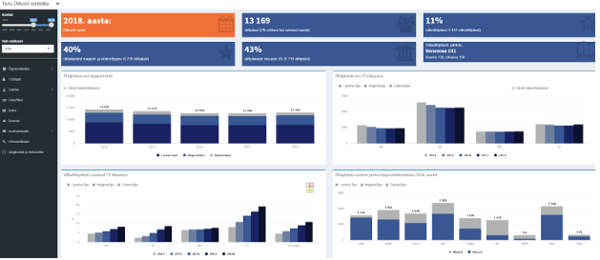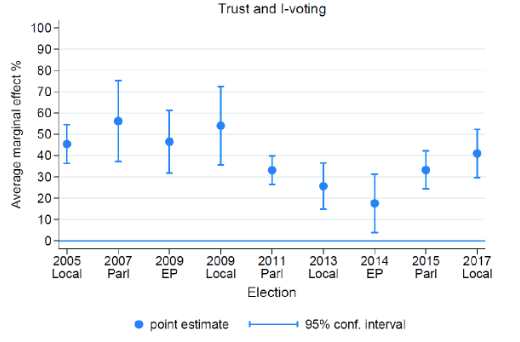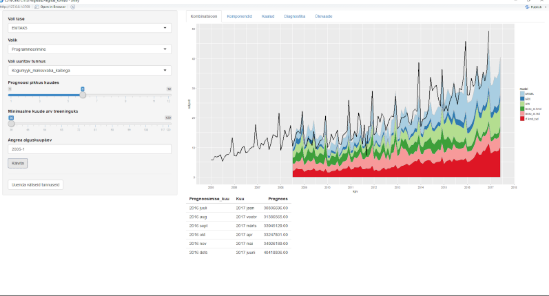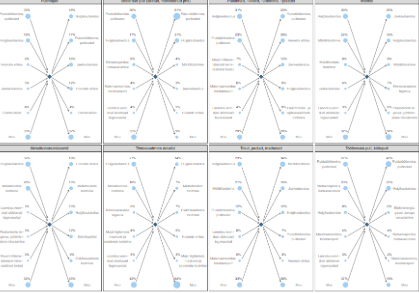Profiling and policy evaluation tools for EUIF (2018-2020)
The CITIS team together with Estonia’s largest IT developer Nortal are building a set of profiling, segmentation and policy evaluation tools for the Estonian Unemployment Insurance Fund (EUIF).
University of Tartu Dashboard (2019)
CITIS built a statistics dashboard for University of Tartu together with the rector’s office. The dashboard takes data from various UT databases on students, staff, research, accounting, entrepreneurship and real estate which can be filtered according to faculty and institute level to give a quick overview of the most important metrics needed for decision making and reporting.
E-voting study (2005-2019)
On top of applied work the CITIS is also responsible for conducting the Estonian e-voting study - a study using cross-sectional post-election surveys of the voting eligible population since the first e-enabled election in 2005. By now we hold survey data on all elections in Estonia where remote internet voting has been possible, a total of 11 nationwide elections so far between 2005-2019.
Data driven analytical tools for the Tax and Customs board (2017)
The CITIS team has built a set of taxation data analysis apps for the Estonian Tax and Customs Board. The project’s aim was to build monitoring, forecasting and impact assessment tools using raw tax (VAT and social tax) declaration data on all Estonian companies between 2002-2016. These declarations are submitted on a monthly basis by around 166 000 entities subject to taxation.
Company value chain analysis (2019)
Taavi Unt and Andres Võrk from CITIS finished a report on the location of Estonian companies in the global and local value chain commissioned by Estonian Parliament’s Foresight Center. The analysis uses company annual reports, VAT declarations and export data on all.
X-road log analysis (2003-2015)
The CITIS team conducted a large scale X-Road central log analysis for service call queries between 2003-2015. This dataset contains over 2 billion service call queries and is a great source to study how usage of e-services has been taken up by the population, what user groups pick services up at what pace, which service are likely to diffuse and how does usage depth and intensity change over the years.

